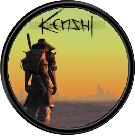Imports:Introduction to Modding
More actions
The point of this tutorial is to explain the functions and terminology of the Forgotten Construction Set (FCS).
Warning, do not use experimental version of FCS when making mods, the users who have stable version cannot use the mods.
If you already did that, here's how to get rid of the errors: Fix for FCS error after Opting Out from Experimental
Official documentation on using the FCS can be found here.
You can open the game and the FCS at the same time, if you do not use Steam launcher. Go instead in the installation folder and double click both open directly from there, or even better, pin them to your Start menu. You can have several FCSs open at the same time this way.
The Start Screen
When the FCS is first launched, a window will open showing the loaded files, with the game's core files on top, and any mods in the mod folder at the bottom.
Next to each file is a checkbox, which signifies which mods will be loaded into the editor. The mod labeled "*ACTIVE*" is the .mod file that any changes will be saved to.
Mods in the lower section can be re-ordered using the up and down buttons to the right. Mods on the bottom will overwrite any changes in the mods above them.
To create a new mod, click the "Create new mod file" button to the right, and a prompt will appear asking for a name. Once a name is entered, the mod will appear in the list, and a mod folder will be generated in Kenshi/mods.
The "DONE" button will close the start screen and open the "Game World" window.
Game World
The Game World allows the user to navigate through the objects contained in the mod files loaded during startup. The pane on the left contains a list of categories which contain the individual items. The right panel shows all of the objects contained in the selected category. Right-clicking these objects will open a context menu, from which objects can be created, edited, or deleted. Double-clicking an object will open its edit menu.
The Edit Menu
All objects consist of attributes, shown on the left, and references, shown on the right. The edit menu allows the user to modify these. Selecting any reference or attribute will display a description of what it does at the bottom of the window.
It is possible to open multiple objects at once.
Attributes
Attributes are values that aren't dependent on other objects. Attributes cannot be added or removed, but can be left blank in some cases. Most attributes vary between objects, except for the attributes under "Base", which are contained in every object. There are three attributes under "Base":
- Name: The name of the object. Doesn't have to be unique, but duplicates are not recommended.
- Object Type: The type of object, i.e. the category. Cannot be changed.
- String ID: An automatically-generated unique ID for each object, cannot be duplicated. If this value is changed, any instances of this object in saved games will become invalid.
References
Unlike attributes, references are values that depend on other objects. References can be added and removed. To add a reference, select a reference to add in the drop-down menu, then click "Add". When a new reference is added, a prompt will open asking for an appropriate object to be selected. References can also have additional values, which can affect how they behave. Information on what these values do can typically be seen at the bottom of the window.
The Toolbar
The toolbar is a collection of tools at the top of the screen. What follows is a description of each tool, from left to right.
- Open: Opens the start screen seen after startup.
- Save: Saves current changes to the active mod file.
- Steam Workshop: Opens a prompt to upload the active mod to the Steam Workshop.
- Global Game Settings: Opens an edit menu for the game's base attributes.
- Artifacts: Opens an edit menu for the Artifacts system.
- Cleanup: Removes obsolete data.
- Changes: Opens the Change List.
- Assets: Opens the Assets list.
- Merge Mod: Merges changes from another mod into the active mod.
- Export Mods File: Obsolete, as mods are already saved to a .mod file.
- Translations: Only available in translation mode.
- Translation Fix: Only available in translation mode.
- Open Any: Opens a mod from any file.
Other Menus
Changes Menu
The changes menu displays changes made under the active mod. This includes changes to existing objects, shown in blue, and new objects, shown in green.
Assets Menu
The assets menu displays a list of all external file paths referenced by object attributes, such as meshes, textures, and collision files.
QOL Features
The FCS contains several quality of life features for the modder. These include, but are not limited to:
- Duplicate/replace with a copy you should never directly edit a vanilla file (unless that absolutely is your intention). Taking a copy of a vanilla file saves you a lot of work, when all the mandatory fields have already been populated. Fe. House buildings are difficult to set up from scratch. If you are making an edit, take a copy first! Yes, this includes all the files inside a file, like vendor lists and squads.
- Set Field you can change one field's contents to all selected items at once (right click on selected item).
- Columns right click on the empty space on a list and you can see columns of the item type.
- Everything the columns is very handy in this tab, you can use a search word to find a specific file here.
- List References by right-clicking an item you can list all references where that fe. character is used. Handly when you want to know which squad spawns a character, or which town spawns a squad.
